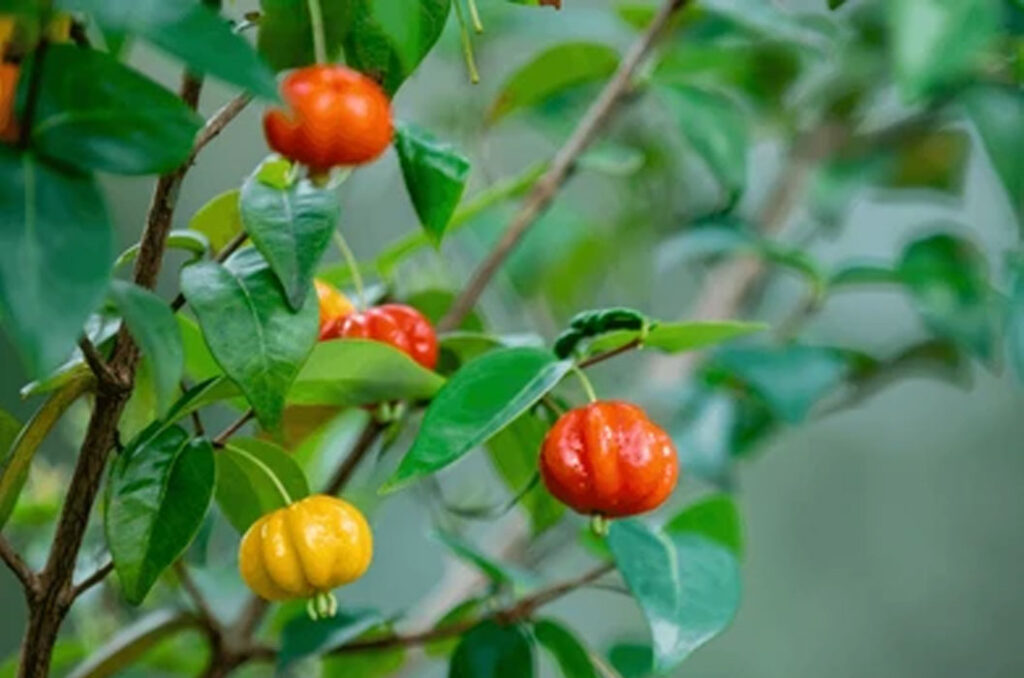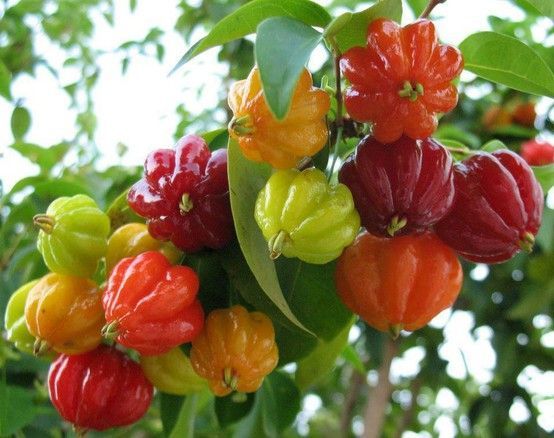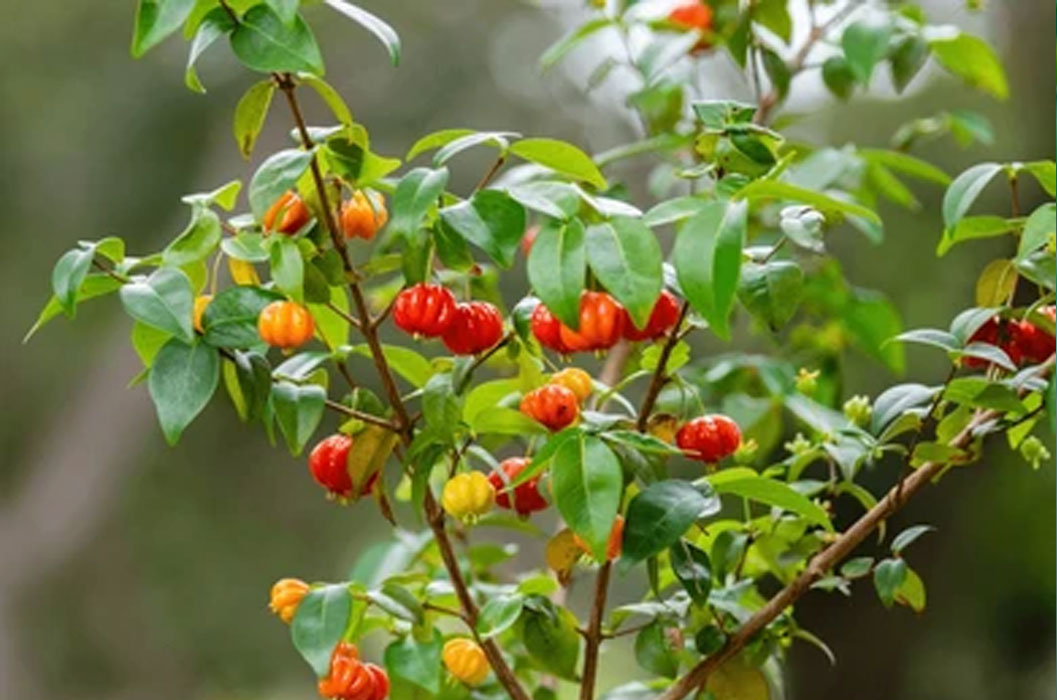Eugenia uniflora is a flowering plant in the family Myrtaceae, native to tropical South America’s east coast. It is often used in gardens as a hedge or screen. The tree was introduced to Bermuda for ornamental purposes but is now out of control and listed as an invasive species.
Eugenia uniflora is a large shrub or small tree with a conical form, growing slowly to 8 metres (26 ft) high. When bruised, crushed, or cut, the leaves and branches have a spicy resinous fragrance, which can cause respiratory discomfort in susceptible individuals. The leaves are without stipules, ovate, glossy, and held in opposite pairs. New leaves are bronze, copper, or coppery-pinkish in color, maturing to deep glossy green, up to 4 centimetres (1.6 in) long. During winter, the leaves turn red.
Flowers have four white petals and are borne on long slender stalks, with a conspicuous central cluster of white stamens ending in yellow anthers. Flowers develop into ribbed fruits 2 to 4 centimetres (0.79 to 1.57 in) long, starting as green, then ranging through orange, scarlet, and maroon as they ripen. Because fruit-eating birds distribute the seeds, they can become a weed in suitable tropical and sub-tropical habitats, displacing native flora.
Culinary uses
The edible fruit is a botanical berry. The taste ranges from sweet to sour, depending on the cultivar and level of ripeness (the darker red to black range is quite sweet, while the green to orange range is strikingly tart). Its predominant food use is as a flavoring and base for jams and jellies. The fruit is high in vitamin C and a source of provitamin A.
The leaves are also used for tea in certain parts of Uruguay.





Source: Wikipedia


